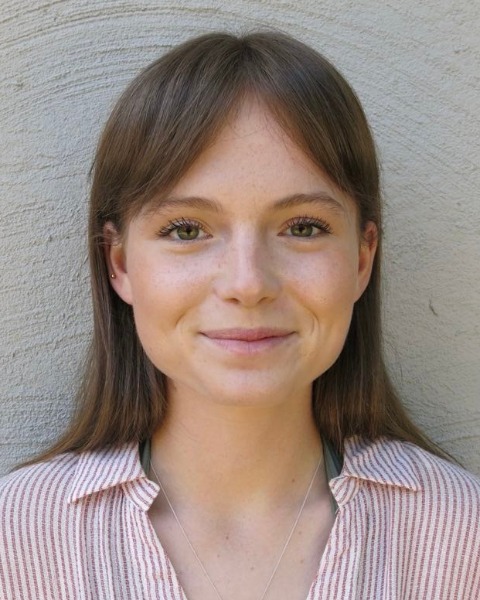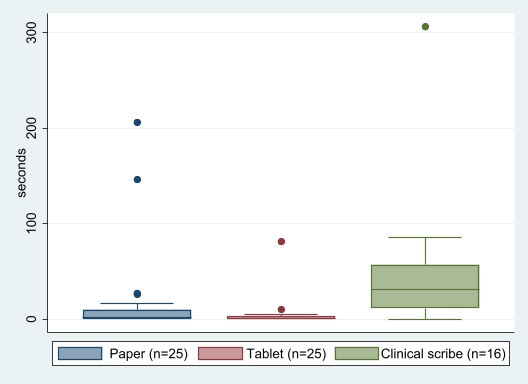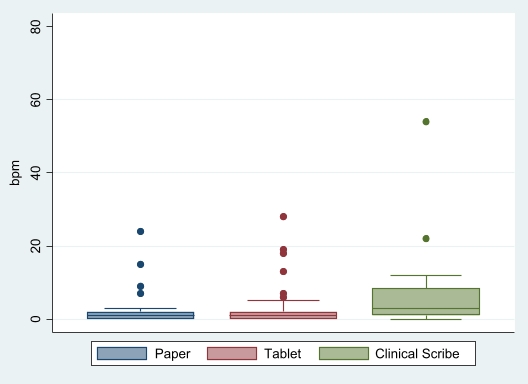Neonatal/Infant Resuscitation
Category: Abstract Submission
Neonatal/Infant Resuscitation III
493 - Evaluation of a Novel App-based tool for Documentation of Neonatal Resuscitation: A Feasibility Trial
Saturday, April 23, 2022
3:30 PM - 6:00 PM US MT
Poster Number: 493
Publication Number: 493.232
Publication Number: 493.232
Georgina L. Blochlinger, Royal Women's Hospital, Mount Eliza, Victoria, Australia; Peter G. Davis, University of Melbourne, Melbourne, Victoria, Australia; jennifer Dawson, "The Royal Women's Hospital, Melbourne, Victoria, Australia; Marta Thio, The Royal Women's Hospital, Albert Park, Victoria, Australia

Georgina L. Blochlinger, BSci BBMed(Hons)
Research Assistant
Royal Women's Hospital
Mount Eliza, Victoria, Australia
Presenting Author(s)
Background: International guidelines highlight the importance of accurate documentation of neonatal resuscitation. Previous studies report that paper-based records are often incomplete or inaccurate. There have been several applications (apps) developed for use in the delivery room (DR), but their accuracy has not been evaluated.
Objective: We aimed to compare the accuracy of a tablet app with conventional paper-based documentation of neonatal resuscitation. Both were completed by members of the research team. Video recording was used as the gold standard. In addition, we assessed the accuracy of documentation by the clinical team.
Design/Methods: This was a randomised controlled trial conducted at The Royal Women’s Hospital, Melbourne, Australia. A research team attended high risk births. Infants who received respiratory support via face mask were eligible for inclusion. A GoPro camera recorded interventions and pulse oximetry (PO) data (oxygen saturation, SpO2; heart rate, HR). Data were recorded by two trained researchers, randomised to use either a paper form or the tablet app (NeoChart+). The clinical team entered a resuscitation note in the hospital electronic medical record (EMR) according to standard protocol. Each intervention, its timing, and PO measurements were obtained from the paper form, tablet app and EMR and compared to data extracted from the video recording. We measured different types of errors; time error (seconds, s), numerical error (% or beats/min), omission rate (event seen in the video but not documented, %).
Results: 25 infants were eligible for inclusion. The mean (SD) gestational age and median (interquartile range, IQR) birth weight were 34.2 (5) weeks, and 2148 (1082 to 3212) grams. There were no important differences in accuracy between paper and tablet documentation. The median (IQR) time to face mask application, documented on paper and tablet differed from the video recording by 2(0 to 10) and 1(0 to 3)s respectively (p=0.31), time to initiation of IPPV differed by 2(1 to 5) and 1(1 to 4)s respectively (p=0.30), time to first change in FiO2 differed by 4(1 to 7) and 5(3 to 7)s respectively (p=0.41), and time to first intubation attempt differed by 6(2 to 10) and 3(1 to 3)s respectively (p=0.30). Documentation by the clinical scribe showed timing errors of up to 71s and omission rates up to 72%.Conclusion(s): When used by a dedicated member of the research team, both the tablet app and paper achieved similar, high levels of accuracy. Documentation by clinicians was inconsistent and frequently inaccurate.
Figure 1: Difference between time to face mask application when compared to video (seconds). Graph shows box plots for each tool, centre horizontal line represents median, upper and lower edges of box show IQR, whiskers show the range, dots represent outliers. n=25 infants had a face mask applied, however not all of these were documented by each tool. p values shown on graph.
Graph shows box plots for each tool, centre horizontal line represents median, upper and lower edges of box show IQR, whiskers show the range, dots represent outliers. n=25 infants had a face mask applied, however not all of these were documented by each tool. p values shown on graph.
Figure 2: Numerical error for documenting HR when compared at 3, 5 and 10 minutes (combined altogether) to video (seconds). Graph shows box plots for each tool, centre horizontal line represents median, upper and lower edges of box show IQR, whiskers show the range, dots represent outliers. p values shown on graph.
Graph shows box plots for each tool, centre horizontal line represents median, upper and lower edges of box show IQR, whiskers show the range, dots represent outliers. p values shown on graph.
Objective: We aimed to compare the accuracy of a tablet app with conventional paper-based documentation of neonatal resuscitation. Both were completed by members of the research team. Video recording was used as the gold standard. In addition, we assessed the accuracy of documentation by the clinical team.
Design/Methods: This was a randomised controlled trial conducted at The Royal Women’s Hospital, Melbourne, Australia. A research team attended high risk births. Infants who received respiratory support via face mask were eligible for inclusion. A GoPro camera recorded interventions and pulse oximetry (PO) data (oxygen saturation, SpO2; heart rate, HR). Data were recorded by two trained researchers, randomised to use either a paper form or the tablet app (NeoChart+). The clinical team entered a resuscitation note in the hospital electronic medical record (EMR) according to standard protocol. Each intervention, its timing, and PO measurements were obtained from the paper form, tablet app and EMR and compared to data extracted from the video recording. We measured different types of errors; time error (seconds, s), numerical error (% or beats/min), omission rate (event seen in the video but not documented, %).
Results: 25 infants were eligible for inclusion. The mean (SD) gestational age and median (interquartile range, IQR) birth weight were 34.2 (5) weeks, and 2148 (1082 to 3212) grams. There were no important differences in accuracy between paper and tablet documentation. The median (IQR) time to face mask application, documented on paper and tablet differed from the video recording by 2(0 to 10) and 1(0 to 3)s respectively (p=0.31), time to initiation of IPPV differed by 2(1 to 5) and 1(1 to 4)s respectively (p=0.30), time to first change in FiO2 differed by 4(1 to 7) and 5(3 to 7)s respectively (p=0.41), and time to first intubation attempt differed by 6(2 to 10) and 3(1 to 3)s respectively (p=0.30). Documentation by the clinical scribe showed timing errors of up to 71s and omission rates up to 72%.Conclusion(s): When used by a dedicated member of the research team, both the tablet app and paper achieved similar, high levels of accuracy. Documentation by clinicians was inconsistent and frequently inaccurate.
Figure 1: Difference between time to face mask application when compared to video (seconds).
 Graph shows box plots for each tool, centre horizontal line represents median, upper and lower edges of box show IQR, whiskers show the range, dots represent outliers. n=25 infants had a face mask applied, however not all of these were documented by each tool. p values shown on graph.
Graph shows box plots for each tool, centre horizontal line represents median, upper and lower edges of box show IQR, whiskers show the range, dots represent outliers. n=25 infants had a face mask applied, however not all of these were documented by each tool. p values shown on graph.Figure 2: Numerical error for documenting HR when compared at 3, 5 and 10 minutes (combined altogether) to video (seconds).
 Graph shows box plots for each tool, centre horizontal line represents median, upper and lower edges of box show IQR, whiskers show the range, dots represent outliers. p values shown on graph.
Graph shows box plots for each tool, centre horizontal line represents median, upper and lower edges of box show IQR, whiskers show the range, dots represent outliers. p values shown on graph.